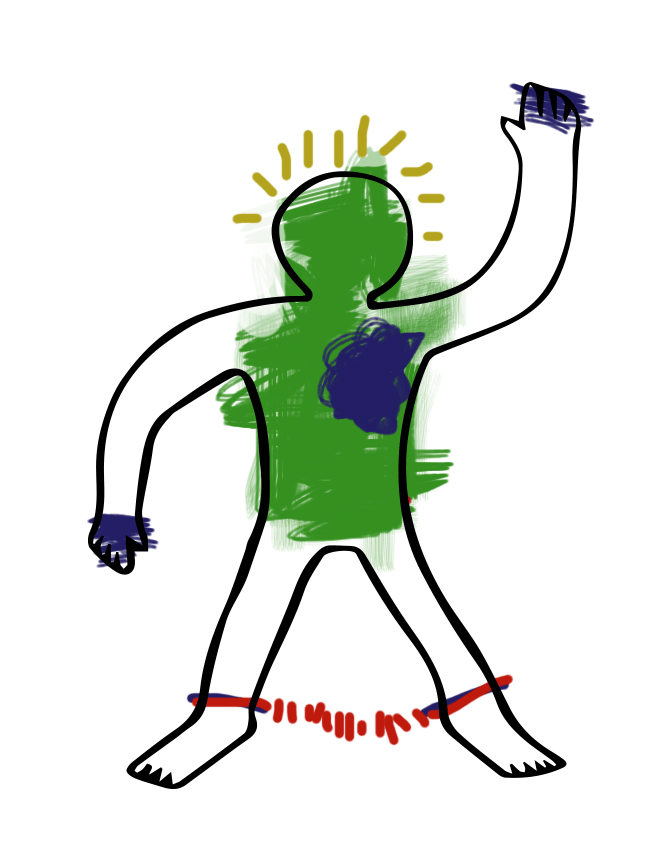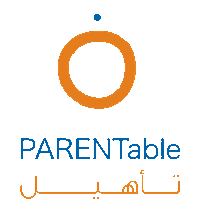
Multilingualism & Schools
by Prof. Daniel Rellstab head of the MA program “Intercultural German Studies and Multilingualism” at the University of Education Schwäbisch Gmünd.
This module helps you better understand the benefits and challenges of multilingualism, why it is essential to foster the family language and how newly arrived families can support their children's language development, and how families can navigate the linguistic challenges with schools.

Let's Start With An Exercise:
Draw Your Languages
Sit down with your family and friends. Everybody gets a piece of paper; prepare a lot of different color pencils.
Step 1

Everybody draws the shape of a human being just like the one you see above. This will represent your own body.
You can also trace it out of your screen here.
Step 2

Everybody thinks about all the languages and dialects that play a role in their life.
Step 3

Become creative: Take one color for each language or dialect, and fill in the part of your body where you think this language or dialect fits. You can use as many different colors as you want, you can color your body the way you like. There is no correct or wrong solution. It is your body!
Step 4

Compare the drawings, and discuss the outcomes!

QUIZ
This is a trick question!!
From a linguistic point of view, the mind is not a vessel! Therefore the question makes no sense.
In multilingual societies, e.g. in West Africa, children grow up as multilingual persons.
hover for the answer
HOW MANY LANGUAGES FIT INTO ONE MIND ?

What is Multilingualism
Perspectives from Academia

Languages in Education
Literature
Antonini, Rachele. 2016. “Caught in the Middle: Child Language Brokering as a Form of Unrecognised Language Service.” Journal of Multilingual and Multicultural Development 37 (7): 710–25. https://doi.org/10.1080/01434632.2015.1127931.
Bloomfield, Leonard. 1933. Language. New York: Holt.
Bouvy, Christine. 2000. “Towards the Construction of a Theory of Cross-Linguistic Transfer.” In English in Europe: The Acquisition of a Third Language, edited by Jasone Cenoz and Ulrike Jessner, 143–56. Clevedon: Multilingual Matters.
Busch, Brigitta. 2017. Mehrsprachigkeit. Wien: Facultas.
Cenoz, Jasone. 2013. “Defining Multilingualism.” Annual Review of Applied Linguistics 33: 3–18. https://doi.org/DOI: 10.1017/S026719051300007X
Cummins, Jim. 2000. Language, Power and Pedagogy. Bilingual Children in the Crossfire. Clevedon etc.: Multilingual Matters.
Cummins, Jim, Shirley Hu, Paula Markus, and M. Kristiina Montero. 2015. “Identity Texts and Academic Achievement: Connecting the Dots in Multilingual School Contexts.” TESOL Quarterly 49 (3): 555–81.
Grosjean, François. 2011. “The Bilingual as a Competent but Specific Speaker-Hearer.” In Multilingual Norms, edited by Madalena Cruz-ferreira, 19–31. Frankfrt/M.: Peter Lang.
Herdina, Philip, and Ulrike Jessner. 2000. “The Dynamics of Third Language Acquisition.” In English in Europe. The Acquisition of a Third Language, edited by Jasone Cenoz and Ulrike Jessner, 84–98. Clevedon: Multilingual Matters.
Haugen, Einar. 1953. The Norwegian Language in America, a Study in Bilingual Behavior. Philadelphia: University of Pennsylvania Press.
Wei, Li. 2008. “Research Perspectives on Bilingualism and Multilingualism.” The Blackwell Guide to Research Methods in Bilingualism and Multilingualism. Wiley Online Books. https://doi.org/https://doi.org/10.1002/9781444301120.ch1
Discover more e-learning courses.


